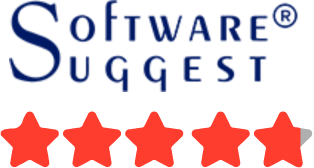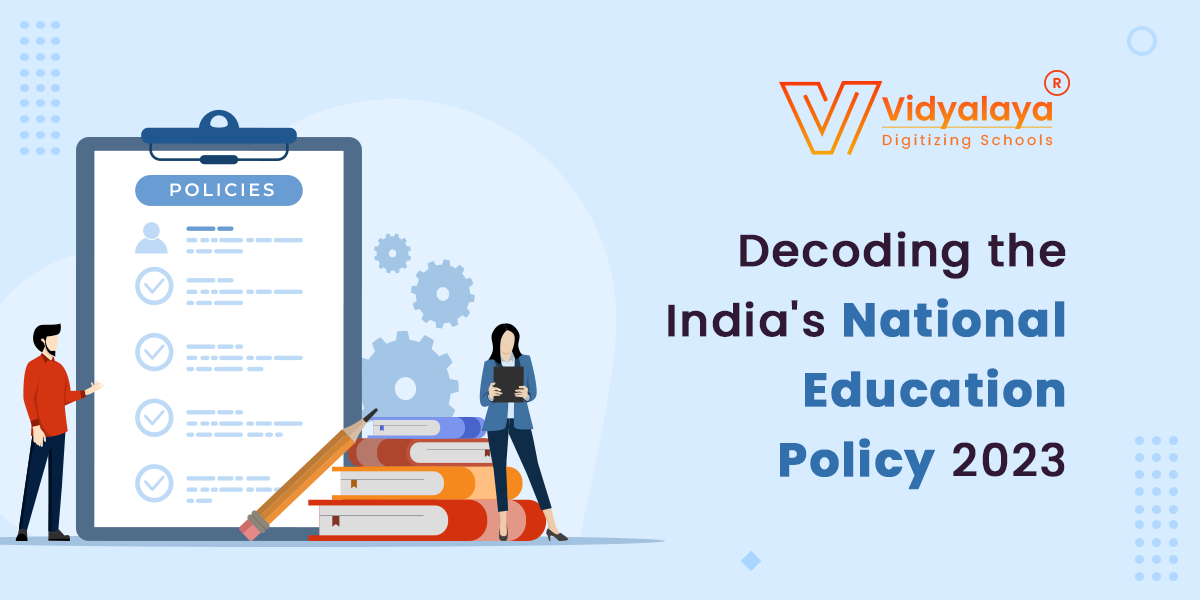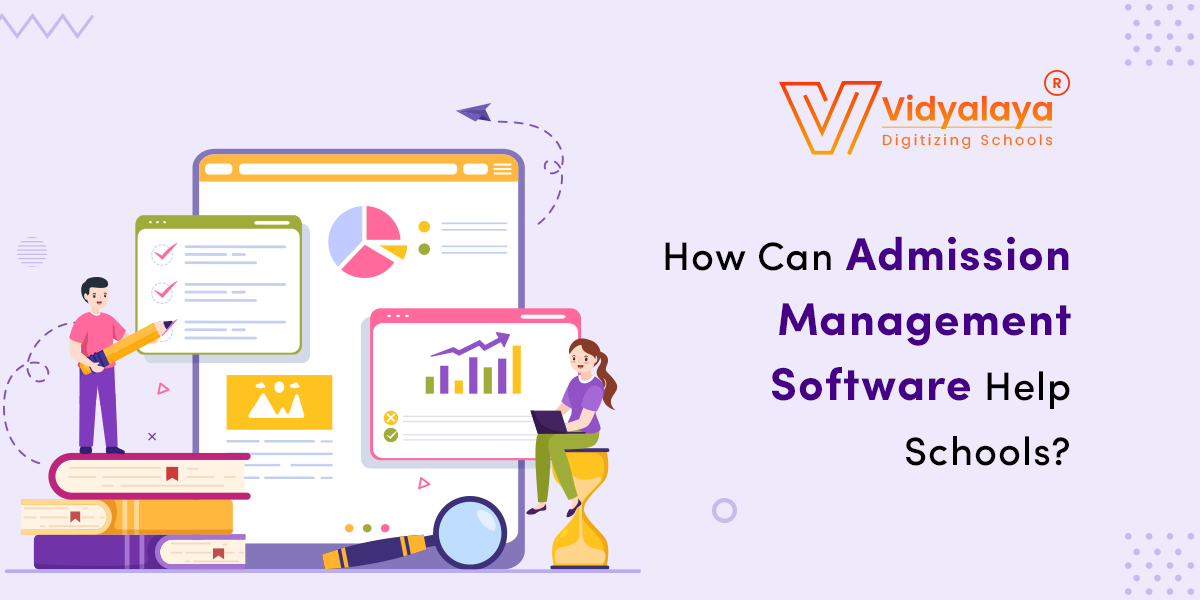What do you imagine when you get a chance to sneak into our country’s past days? Diversity, beautiful landscapes, serene nature, colourful culture, and yes, a rich knowledge base. We have a great legacy of quality education from ancient Gurukuls that we have the world’s oldest university system- Nalanda! But we have not got lost and stuck with the glorious history. We have updated the time to meet the changing needs of education, likewise, we have upgraded from manual administration of schools to School App. For this, our government has started the New National Education Policy 2020. Although it has been 4 years since the launch of the policy, still many of us are not fully aware of it. Let’s decode it here in simple words!
What is NEP 2020?
The Indian government has launched the new National Education Policy or NEP 2020, which is primarily based on the pillars:
- Access
- Equity
- Quality
- Affordability
- Accountability
This policy is meant to bring a more holistic, dynamic, and multidisciplinary approach in learning which will modernize the system to make it a fit for a global platform. Many states of India like Assam, Maharashtra, Andhra Pradesh, and Rajasthan, have already modified their existing systems to adopt the new NEP policies.
What are the salient features of the New Education Policy 2020?
NEP 2020 is integrated with several new features, but some are mandatory to mention while referring to NEP 2020 significance.
1. Schooling at 3 years of age!
According to NEP 2020, the age bracket is extended from 6-14 to 3-18 years. The old 10+2 schooling system is replaced with a 5+3+3+4 system to accommodate the cognitive development stages of a child. Now the new education system will be as follows:
- Foundation stage – 3-8 years
- Preparatory stage- 8-11 years
- Middle phase- 11-14 years
- Secondary – 14-18 years
The 12 years of formal education and three years of pre-school education will emphasize on early childhood care and education.
2. Mother tongue as Instruction Medium:
It is proven that we learn better when we are taught in our mother tongue. To take this thought further, NEP 2020 has suggested a learner’s native language as a medium of instruction with adherence to the ‘three-language formula’. At least until grade 5, mother/regional/native language will be used to set up the instructions. This applies to both public and private schools.
3. Blurred differences between different streams:
NEP 2020 denies the difference between different arts, commerce, and science streams. These streams were the pillars of the traditional education system which binds the students to the stream at the end of the course unless the student leaves in between. NEP 2020 blurs this distinction and suggests that students can make a choice from a variety of disciplines throughout the streams. For vocational education, students can get an internship opportunity from class 6.
4. Boost to online education:
We all have understood the importance and inevitability of online education, so National Education Policy 2020 emphasizes on digital education so that all students get equal opportunities. This policy helps teachers and students so that they get a better learning experience. NEP 2020 suggests integration with the curriculum, right from the primary level.
5. Efforts for Enrolment boosting:
National Education Policy 2020 aims for a 50% increase in enrolment by 2035 for higher education. This focuses on incorporating a maximum number of students as well as the least dropout rate through multiple exit options. Also, it suggests continuous assessments to evaluate student learning.
6. Improved Parental Involvement:
In the old days, parental involvement was limited to paying fees and signing report cards. However, NEP 2020 recognizes the significance of parental involvement and tries to improve it. It encourages this involvement through various activities like resource sharing, effective communication channels, parenting workshops, and different campaigns.
How can Vidyalaya help in implementing NEP 2020 at your campus?
EdTech giants like Vidyalaya have understood the National Education Policy 2020 thoroughly and have already implemented in its all leading products like School App and School ERP systems.
- According to NEP 2020, the age bracket is now extended. Vidyalaya’s school management software will easily take care of these changes as it is highly customizable and dynamic. It keeps the student’s demographic information accurate. This helps school administration to make data-driven decisions.
- NEP 2020 focuses on the learner’s mother/regional/native language and chooses it for instruction departing. Vidyalaya’s school ERP will highlight this personalized learning by collecting data on student’s preferences which will help teachers to create personalized learning paths and hand-over to targeted students.
- NEP 2020 is designed to bring a flexible and responsive curriculum that can adhere to society’s needs. Vidyalaya’s school App is integrated with LMS systems that can help to design a curriculum with in-built tools for curriculum planning, management, and evaluation.
- To adapt to online learning, NEP has amended the existing approach to meet the changing needs of students and society. Vidyalaya’s School management software will support hybrid learning by offering in-built tools for both offline and online learning. This will offer flexibility to learn at their own pace and adapt to different learning styles.
- To meet the NEP 2020 suggestion about boosted enrolment, Vidyalaya has an all-in-one, super-efficient school ERP that can easily accommodate the enrolment and admission process by following the latest developments.
- Vidyalaya supports increased parental involvement in student’s learning and keeps them on the same page so that they are aware of the developments in real time. Using Vidyalaya’s school app, parents can get all the updates, like fee reminders, attendance notifications, exam timetable updates, etc. on their smartphones.
What are the challenges of NEP 2020 implementation?
Although the NEP 2020 looks perfect on paper, the implementation of the new suggestions is challenging. Let’s learn what are the factors that are hindering the implementation of this revolutionary policy:
- There will be a need for the creation of new educational institutes every week for the following 15 years to meet the forecast of the gross enrolment ratio to double by 2035.
- As NEP 2020 gives more significance to new pedagogical approaches in teaching, India will have a huge requirement of new-blood teachers who understand the changes and exact requirements and will mend the system accordingly.
- These competent teachers force is expected to be experts in one area and lean in other subjects as well.
- It requires sufficient funding and resources to have a proper implementation of NEP 2020 policies.
- Several educational institutes offer local language as a medium of instruction. Now, as per the guidelines suggested in NEP 2020, it is mandatory for all institutes to provide courses in regional languages.
Bottom line Thoughts!
Indian education system is at the stage of crossroads where one can find challenges as well as opportunities. These challenges and opportunities enforce to break the traditional brackets of memorization-based education and go beyond it. Vidyalaya has started incorporating these futuristic policies into its EdTech products. Be it our School App or any other product, you will find it moulded to welcome the features mentioned by the NEP 2020. We hope to nurture students with both academic and skills, mindset, and values through our products. Be a beacon of change, and set an example of how you are ready to meet the demands of modern world with Vidyalaya’s School ERP!























